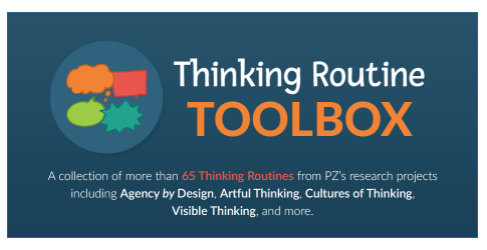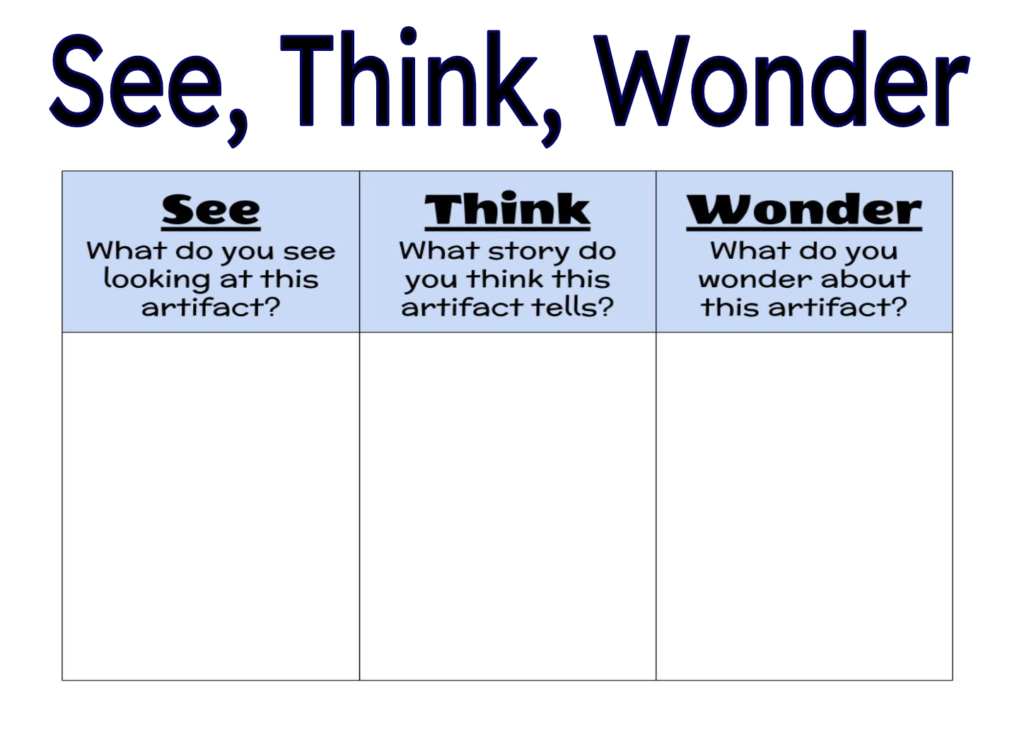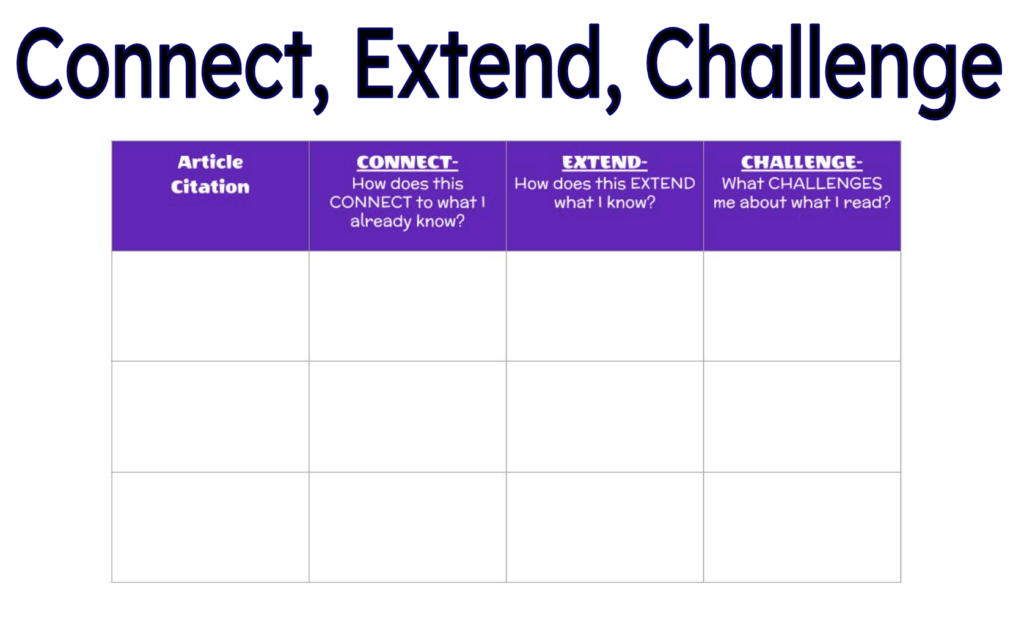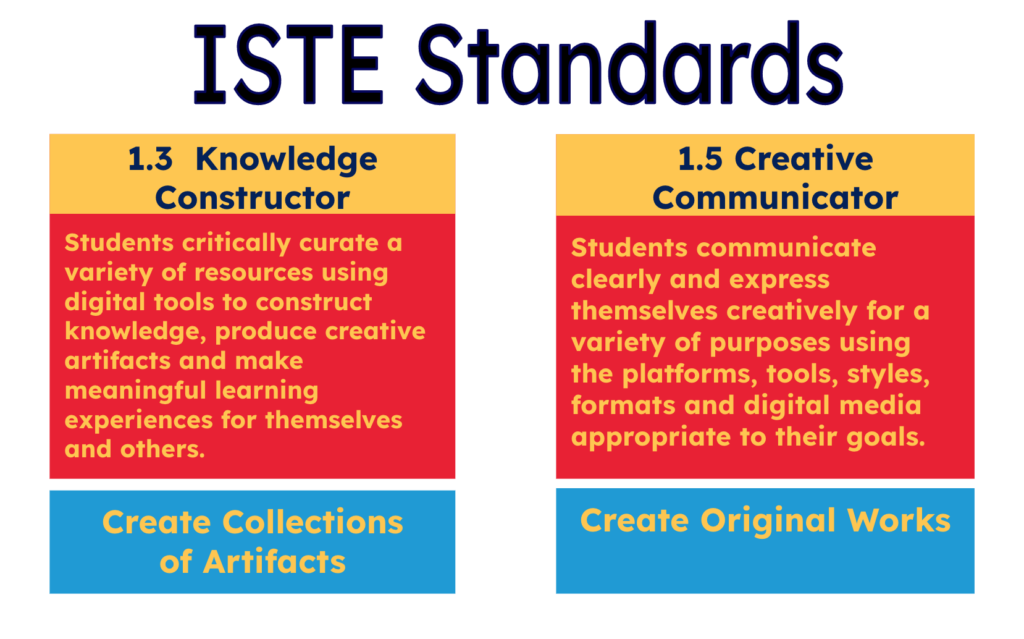How many times have you asked one of your students, “What do you think about this?” and received the answer of “I don’t know” or blank stares. If you nodded your head and thought of quite a few or more times, you are not alone. In an educational landscape where our learners are increasingly disengaged, we need to let them know that all of their voices matter. We need to make their thinking visible through thinking routines and convey the message that we are a community of thinkers and learners.
What Are Thinking Routines?
All that is easier said than done, you might be thinking. If all thinking is a function of learning, how can we, as educators, promote cultures of thinking in our classrooms? Six years ago, I was first introduced to Project Zero’s Thinking Routines and the impact they can have on students’ thinking. Have you heard of thinking routines before? Project Zero’s thinking routines take the content shared with students and use scaffolds to reveal student thinking. These scaffolds are powerful steps that help students to better share their thinking.

Thinking routines are extremely versatile and work in a variety of contexts. You can use them in almost any subject and with any age group. I love incorporating Universal Design for Learning principles while using them and giving my students multiple choices in how they represent or share their thinking. They work best when introduced intentionally one at a time, having students master one type of thinking in many ways before moving on to the next one.
Thinking routines can absolutely be done using analog methods, but I have found that by carefully pairing them with technology tools, we can further amplify the impact of these routines and make learning visible to the entire learning community.
Getting Started with Thinking Routines
So how do you get started using thinking routines, and what are some best practices for using them? There is a huge variety of thinking routines that you can choose from. Project Zero Thinking Routines Toolbox is an amazing toolbox that is organized by types of thinking. The first category includes Core Thinking Routines. Core thinking routines are a great place to get started when beginning a culture of thinking in your classroom. When I determine which thinking routine I want to use, I always start by identifying the type of thinking that I want my learners to do. For example, if I want them to synthesize what they have learned, I explore that category and select the routine that best meets my needs.

Example: See, Think, Wonder
When I first explored thinking routines with my second graders, I started with See, Think, Wonder. This routine helps students slow down and closely examine an object. I have used this routine to examine historical artifacts like photos, scientific experiments, and more. This routine begins by asking students, “What do you see?” Students can then share their concrete observations. Next, they share what they think about the object or “What do you think about that?” When they do this, they begin to make inferences based on those observations. Last, they share what the object makes them wonder. This is essential in a world where we don’t encourage our students to ask questions or wonder enough.

As my second graders were learning about the American flag, I partnered them up to use See, Think, Wonder to explore a historical photo. I paired it with Padlet during this activity for a few reasons. First, I like how Padlet’s Shelf feature organizes each scaffold. Second, Padlet offers our students many ways to share their thinking. My students could choose to respond with either text, audio, or video, providing them multiple ways to share their learning. Last, now all of the thinking in the learning community is visible to everyone. This could lead to further conversations about their wonders or even how they backed up their thoughts. Having students work in groups in this example also allowed them to discuss their responses in their pairs before responding.
Example: Connect, Extend, Challenge
One of my favorites is Connect, Extend, Challenge. I love using this routine to encourage a collective culture of learning. It first has students connect what they have learned to what they already knew. Next, it has them share how the new thinking has extended or added to their thinking. Last, they share what still challenges them about the new learning.

When I use this routine with my fourth graders during their American Revolution unit, we use a collaborative slide deck. Each student is assigned a slide first. The student uses a resource called Gale in Context: Elementary (previously called Kids Infobits) to find an article about the American Revolution. Then, they learn how to cite their source and after listening or reading the article, they can respond to each scaffold. By having them work in a joint slide deck, they are able to learn from each other as well and build a collective culture of thinking and research.
Artifacts of Learning
These two examples also illustrate how you can empower your students to create artifacts of learning using thinking routines. Doing so promotes the International Society of Technology in Education (ISTE) Standards for Students, especially 1.3 Knowledge Constructor and 1.5 Creative Communication. This work is essential in today’s world, where building critical thinking, creativity, collaboration, and communication skills are more important than ever.

Done over time, these scaffolds become patterns of behavior. As students develop these patterns of thinking, it is essential that they know all of their voices matter. Want more information on thinking routines, check out Project Zero’s website and my blog, TannenbaumTech, for more resources to advance your practice.

